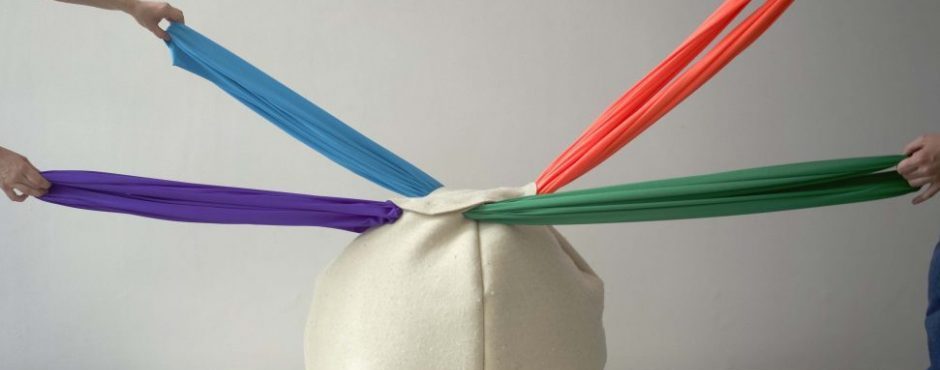I loved this second workshop, not because it was better than the first, but because it introduced me to bell hooks, who already inspired my pedagogical and personal growth.
Before the workshop, we were assigned two readings on two topics: “Aims of Art Education” and “Learning Outcomes as a Debate.” This reflection will focus on the former reading, “Talking Art as the Spirit Moves Us” by bell hooks (1995).

Gloria Jean Watkins (1952-2021)[1] adopted the name bell hooks in honour of her grandmother, Bell Blair Hooks and used lowercase letters to shift the focus from her identity to her ideas. She was an African-American writer, teacher, feminist, critic, and intellectual dissident, internationally recognised for her work on love, race, gender, art, history, feminism, media, and social class. Widely regarded as a feminist activist and cultural critic, she established the bell hooks Institute at Berea College in Kentucky, where she began a professorship in residence in 2004.

This article, along with Teaching to Transgress (1994), which I discovered while researching bell hooks, has reinforced my belief in the importance of fostering critical thinking in my teaching. It has challenged both my own learning journey and that of my students by encouraging us to question our assumptions, recognise and embrace diversity—whether in our individual needs, strengths, challenges, or those of the people we design for and with. This idea deeply resonates with my approach to teaching. As a User Experience Design lecturer, I encourage my students to truly understand the people they design for and with, considering their needs, preferences, and how to work ethically and inclusively. I emphasise the importance of designing with empathy, but also with intellectual rigour, extending beyond empathy itself.
Shifting to a more inclusive approach enriches our learning experience, the impact of student’s works and the lives of the people they design for and with. Brené Brown[2], in remembering hooks influence on her teaching, reads a quote from one of the paragraphs in Teaching to Transgress (2014) where hooks in reference to Freire’s work talks about “education as the practice of freedom” as a practice where “students are not the only ones asked to share, to confess.” hooks continues, saying, “Engaged pedagogy does not simply seek to empower students. Any classroom that employs a holistic learning model [like we do at LCC] will also be a place where the teachers grow and are empowered by the process. That empowerment cannot happen if we refuse to be vulnerable while encouraging the students to take risks”. Brené Brown refers to this passage as a eureka moment when, in her first teaching experience, she was afraid of losing control of her students and ended up losing complete control of her classroom, gaining complete trust. I seek to do that.
I found this super inspirational and I ended up buying Teaching to Transgress. In my class, I try to enact this radical space of possibilities by encouraging my students to question and critique everything they are told, including what I tell them, their briefs, and the institutional systems they work with and for.

In Friday’s class with my students, this emphasis on critiquing emerged when we challenged our assumption with a group discussion about what impacts students’ learning, which is part of the brief they’ll work on this year. One student mentioned that it would be great if there could be zoned areas, such as a sensory-deprived space, making space with tools and machinery of every kind for students to go and do things when they want, a more creative social area where controlled music could be played in the background etc. Another student replied that achieving that flexibility in public spaces is impossible. We discussed this space of (im)possibilities – how systemic institutional decisions and priorities impact the way we design buildings for students and staff and the way they are perceived by us. I found this reminiscent of Bearden’s example brought about by hooks to illustrate how systemic oppression normalises harmful design biases across a variety of, in my case, design students who are or should be specialist in this field. I urged them to question the system, to stand up against poor management and design choices, and not to let these limitations stifle their creative ideas or inclusive values. I encouraged them to find ways to overcome these challenges and transform the impossible into the possible. I want to bring more of this rebellious spirit to my class and enable my students to feel safe but also brave not only in speaking out but also in speaking up (Arao and Clemens, 2023).
(Total word count: 756)
[1] https://en.wikipedia.org/wiki/Bell_hooks
[2] Brené Brown, on bell hooks https://www.youtube.com/watch?v=m6ZL-YxSrDQ&t=113s
References:
Addison, N., 2014. Doubting learning outcomes in higher education contexts: From performativity towards emergence and negotiation. International Journal of Art & Design Education, 33(3), pp.313-325.
Arao, B. and Clemens, K., 2023. From safe spaces to brave spaces: A new way to frame dialogue around diversity and social justice. In The art of effective facilitation (pp. 135-150). Routledge.
hooks, b., 1994. Teaching to transgress. Routledge
hooks, b., 1995. Talking Art as the Spirit Moves Us. In Art on My Mind: Visual Politics. Illustrated edition. New York: New Press, p.101.
